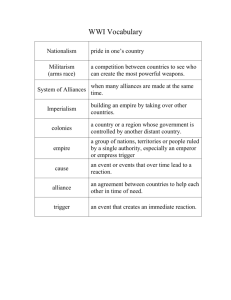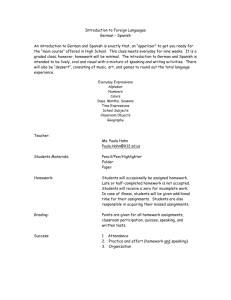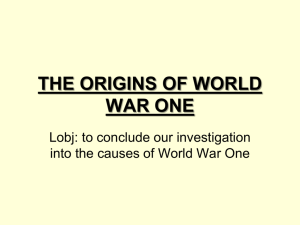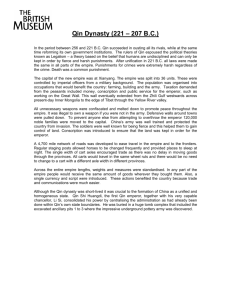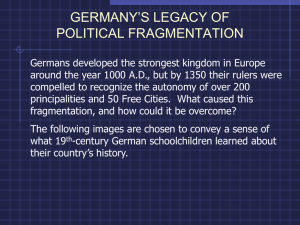A SUMMARY OF THE THIRTY YEARS' WAR (1618
advertisement
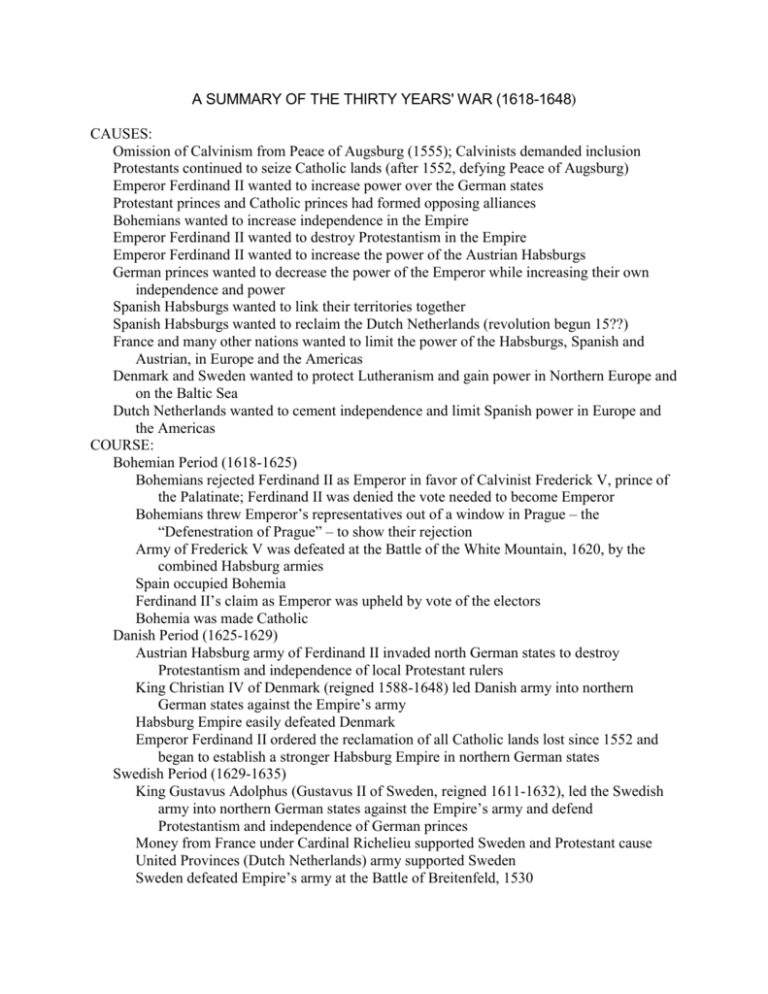
A SUMMARY OF THE THIRTY YEARS' WAR (1618-1648) CAUSES: Omission of Calvinism from Peace of Augsburg (1555); Calvinists demanded inclusion Protestants continued to seize Catholic lands (after 1552, defying Peace of Augsburg) Emperor Ferdinand II wanted to increase power over the German states Protestant princes and Catholic princes had formed opposing alliances Bohemians wanted to increase independence in the Empire Emperor Ferdinand II wanted to destroy Protestantism in the Empire Emperor Ferdinand II wanted to increase the power of the Austrian Habsburgs German princes wanted to decrease the power of the Emperor while increasing their own independence and power Spanish Habsburgs wanted to link their territories together Spanish Habsburgs wanted to reclaim the Dutch Netherlands (revolution begun 15??) France and many other nations wanted to limit the power of the Habsburgs, Spanish and Austrian, in Europe and the Americas Denmark and Sweden wanted to protect Lutheranism and gain power in Northern Europe and on the Baltic Sea Dutch Netherlands wanted to cement independence and limit Spanish power in Europe and the Americas COURSE: Bohemian Period (1618-1625) Bohemians rejected Ferdinand II as Emperor in favor of Calvinist Frederick V, prince of the Palatinate; Ferdinand II was denied the vote needed to become Emperor Bohemians threw Emperor’s representatives out of a window in Prague – the “Defenestration of Prague” – to show their rejection Army of Frederick V was defeated at the Battle of the White Mountain, 1620, by the combined Habsburg armies Spain occupied Bohemia Ferdinand II’s claim as Emperor was upheld by vote of the electors Bohemia was made Catholic Danish Period (1625-1629) Austrian Habsburg army of Ferdinand II invaded north German states to destroy Protestantism and independence of local Protestant rulers King Christian IV of Denmark (reigned 1588-1648) led Danish army into northern German states against the Empire’s army Habsburg Empire easily defeated Denmark Emperor Ferdinand II ordered the reclamation of all Catholic lands lost since 1552 and began to establish a stronger Habsburg Empire in northern German states Swedish Period (1629-1635) King Gustavus Adolphus (Gustavus II of Sweden, reigned 1611-1632), led the Swedish army into northern German states against the Empire’s army and defend Protestantism and independence of German princes Money from France under Cardinal Richelieu supported Sweden and Protestant cause United Provinces (Dutch Netherlands) army supported Sweden Sweden defeated Empire’s army at the Battle of Breitenfeld, 1530 Sweden pursued the Empire’s army driving it south Gustavus Adolphus was killed in the Swedish victory at the Battle of Lützen Swedish army withdrew from the war French Period (1635-1648) France, under the leadership of Cardinal Richelieu, entered the war Thirty Years’ War became an expansion of the war between France and Spain French army drove Spanish and Austrian armies back across German states Battle of Rocroi, 1643, was the first defeat of the Spanish army in over a century War was ended finally by negotiated Peace of Westphalia, setting pattern for the future CONSEQUENCES: Peace of Westphalia (1648) Calvinism was granted equal rights with Catholicism and Lutheranism German states (365 separate) were each recognized as sovereign and independent United Provinces of the Dutch Netherlands was recognized as sovereign and independent Switzerland was recognized as sovereign and independent France gained territories of Metz, Toulon, and Verdun and the province of Alsace Sweden gained western Pomerania and the bishopric of Bremen General overview of results France emerged is the greatest power in Europe Sweden emerged as the greatest power on the Baltic Pope rejected the Treaty; the Pope’s rejection was ignored showing the decline of the power of the Papacy Austrian Habsburg power was limited within the Holy Roman Empire Office of the Holy Roman Emperor was only ceremonial without real power in the German states of the Empire Independence of German states would keep German states divided until 1870 Over one-third of the population of the Holy Roman Empire died during the Thirty Years’ War due to war, famine and disease Religious toleration began to emerge: rulers were reluctant to force religious beliefs on people Other Results and comments War between France and Spain continued until 1659 ending with French victory Peace of the Pyrenees (1659) gave France the land in the Pyrenees and in Flanders Peace of the Pyrenees (1659) brought marriage between Louis XIV of France and Maria Theresa, the Spanish infanta, initiating French claims to Spanish lands and throne Habsburg domination of Europe was ended Austrian Habsburgs would expand southeast in direction of Hungary and the Balkans against the Ottoman Empire instead of into the states of the Holy Roman Empire Portugal regained its independence from Spain (lost in 15??) by revolution in 1640 Spanish power was broken and Spain would go into decline France under Louis XIV was now Europe’s greatest power Bourbons (ruling house of France) and Habsburgs (ruling house of Austria) would clash over the succession to the Spanish throne in 1701 causing the next major European War: War of the Spanish Succession, 1701-1714 England remained out of the Thirty Years’ War due to its conflict between monarchy and Parliament (English Civil War 1642-1649)
